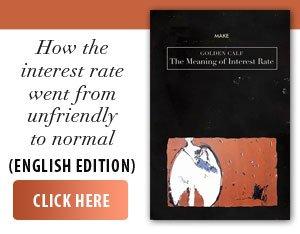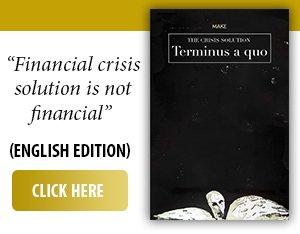Street protests have demonstrated, in the last two decades, that social networks are not only communication tools, but also true "virtual markets” where civic movements are born. From the "yellow vests” in France to the anti-corruption protests in Romania or the farmers' demonstrations in Germany and Poland, online mobilization has allowed people to gather quickly, transmit messages in real time and counter the official narrative. Facebook, Twitter, YouTube and more recently TikTok have become key spaces for organizing protests, transforming individual indignation into a collective force capable of influencing politics. From the fall of the monarchy in Nepal and the massive protests in Belarus, to the Arab Spring and the demonstrations in Europe over the past decade, the world has witnessed a series of popular movements that have changed the fate of states. What brings them together is the refusal of citizens to accept the abuse of power; what differentiates them are the consequences - some transformative, others dramatic or incomplete. It is no less true that in this virtual space fake news and manipulation are fully manifested. Moreover, from Europe, accusing fingers are being pointed at Russia and China, directly accused of trying to destabilize democratic regimes by manipulating social networks. The last few days have been marked by large-scale demonstrations from Nepal to England and Turkey.
• 100,000 march in London
More than 100,000 people took part in the "Unite the Kingdom” march in London on Saturday, organised by anti-immigration activist Tommy Robinson (a social media star), in the largest right-wing demonstration in modern Britain, Reuters reports. Police reported clashes between protesters and riot police, while an anti-racism counter-protest drew around 5,000 people. The demonstration, marked by British, American and Israeli flags and anti-immigration slogans, came amid a tense summer dominated by protests against the accommodation of migrants in hotels. Robinson presented the march as a defence of free speech, but was challenged because of his criminal record. Immigration, with more than 28,000 arrivals via the English Channel in 2025 alone, has become the main political issue in the United Kingdom, eclipsing economic problems and fueling the rise of populist parties.
• Political crisis in Turkey
The Turkish opposition is very successful in mobilizing the population with the help of social networks. Tens of thousands of people protested in Ankara on Sunday ahead of a decisive hearing on the fate of the CHP, the main opposition party in Turkey, reports AFP. The court must decide whether to annul the CHP congress in November 2023, at which Kemal Kiliçdaroğlu was ousted and Özgur Özel elected leader. Prosecutors accuse Özel, Istanbul Mayor Ekrem İmamoğlu and other CHP leaders of electoral fraud, risking up to three years in prison. The CHP denies the charges and says the government is trying to weaken its main opposition force. The case is seen as an attempt to undermine the party, which defeated the AKP in the 2024 local elections and has strengthened its popularity through massive protests after the arrest of İmamoğlu.
• Nepal: Parliament set on fire, prime minister resigns, major political crisis
Nepal is these days an example of how things can completely get out of control, everything starting from the uprising...online. Nepal is going through its worst political crisis in recent years. Hundreds of demonstrators stormed the Parliament in Kathmandu and set it on fire, despite the resignation of Prime Minister K.P. Sharma Oli, announced the same day, according to AFP. The legislative building and several homes of political leaders were set on fire. Former Prime Minister Sher Bahadur Deuba was injured, and Rajyalaxmi Chitrakar, the wife of former Prime Minister Jhalanath Khanal, died in hospital from burns. Thus, 20 parliamentarians from the Rastriya Swatantra Party resigned, demanding an "interim civilian government” and an international investigation into the repression. The causes of the movements: corruption, censorship and the recent ban on social networks (Facebook, YouTube, Instagram), lifted only after at least 19 people were killed in clashes between protesters and police. Nepal, which in 2006 abolished the monarchy and proclaimed itself a federal republic, is now demonstrating how fragile the political balance remains, especially in the face of a younger generation connected to the Internet and willing to challenge authority. Against this background, the president appointed a woman as prime minister for the first time, after the government collapsed, following protests in which 51 people lost their lives. At the proposal of the new prime minister, the head of state dissolved Parliament
l and announced that new elections would be held next spring. After Sushila Karki was sworn in by President Ram Chandra Poudel, Nepalese celebrated in the streets.
• Protests in Serbia
Protests broke out in Serbia in November 2024, after the collapse of the roof of the Novi Sad train station, a tragedy that left 15 dead and was blamed on corruption and faulty construction. The movement, initiated by students and supported by professors, quickly spread to major university centers and then throughout the country, with the help of social media. According to AP News, since August 2025, the demonstrations have entered a violent phase, with daily clashes between protesters and police, especially in Belgrade and northern cities. Numerous accusations of police brutality have emerged, confirmed by images and testimonies. At the same time, there have been attacks on the headquarters of the ruling party (SNS) and the Serbian Radical Party. Although the government has published documents on the reconstruction of Novi Sad and has sanctioned several SNS members, President Aleksandar Vuèić has not condemned his party's aggressive rhetoric, which has fueled tensions.
Currently, the protesters' demands are not only for responsibility for the Novi Sad tragedy, but also for early elections. The political situation remains unstable, and the division between power and civil society is deeper than ever.
• Belarus: massive repression, regime intact
In 2020, Belarus experienced the largest civic mobilization in its recent history. Number of participants: between 200,000 and 400,000 people took to the streets in Minsk alone, over 30,000 people arrested, hundreds injured, several confirmed deaths, approximately 500,000 Belarusians have left the country in recent years, according to Wikipedia. Currently, international organizations estimate over 1,400 people imprisoned for political reasons. Although the scale of the protests was comparable to that in Ukraine in 2014, the Lukashenko regime survived, supported by the loyalty of the security apparatus and Russia.
• Arab Spring: between victory and tragedy
Between 2010 and 2012, a wave of uprisings swept the Arab world. Social networks were not at the level they are today, but they were widely used during that period. The effects of the movements were far from expectations, according to amnesty.org. Tunisia: Ben Ali's regime fell, and the country embarked on a fragile democratic transition marked by repeated political crises. Egypt: Hosni Mubarak was forced to resign after three decades in power. However, the military soon regained control. Libya and Yemen: Protests turned into civil wars. Syria: Peaceful demonstrations degenerated into a devastating conflict, resulting in hundreds of thousands of deaths and millions of refugees.
• Europe: Corrective protests, not revolutions
In contrast, Europe over the past decade has seen mostly corrective protests, designed to correct wrongdoings, not to overthrow regimes. France: The "yellow vest” movement (2018-2019) mobilized hundreds of thousands of people against rising prices and social inequalities. Romania: Anti-corruption protests in 2017 brought over 500,000 people to the streets; the government was forced to withdraw a controversial ordinance related to the judiciary.
Poland and Hungary: demonstrations for the independence of the judiciary and freedom of the press; the regimes resisted, but pressure from the streets and the EU limited the slippage. Sectoral protests: in 2024, Europe recorded over 5,000 demonstrations by farmers - the largest wave in recent years, reports Reuters.
Comparing these examples, two typologies can be distinguished: - Radical revolutions: Nepal (2006 and 2025), Belarus (2020), the Arab Spring - where authoritarian regimes were challenged head-on, and the risk of repression was huge. - Corrective protests: Western and Central Europe - where democratic institutions allowed tensions to be absorbed without regime change.
Figures and facts show that the streets of the world have become the barometer of democracy. In Nepal, dozens of deaths and a Parliament burned down in just a few days demonstrate political fragility. In Belarus, hundreds of thousands of people took to the streets, but the regime survived through repression. In the Arab world, hopes were often buried under the ruins of wars. In Europe, massive protests led to democratic corrections without complete destabilization. One thing is certain: democracy is not won once and for all. From Kathmandu to Minsk, from Tunis to Paris, people have demonstrated that freedom and justice must be defended relentlessly. Social networks, often accused of becoming platforms for manipulation, can also be used to coagulate movements that serve to defend human rights.
• Top 10 social media networks in 2024
According to interactions.ro, the top is still dominated by Facebook, YouTube and Instagram, but TikTok is far behind ä. Meta dominates the top with Facebook, Instagram, WhatsApp and Messenger. China has a very strong ecosystem of its own (WeChat, Douyin). Young people are focused on TikTok, Snapchat and Instagram. Video and messaging are the formats with the highest growth and impact.
Here is the ranking:
1. Facebook - 3.07 billion users
Absolute leader of social media, covering almost 60% of all global users. Powerful for marketing due to its large audience and advanced targeting tools.
2. YouTube - 2.53 billion users
The dominant video platform, with one billion hours watched daily. It massively influences purchasing decisions and is essential for video marketing.
3. Instagram - 2 billion users
Most popular among young people (18-34 years old). Ideal for visual content, influencers and creative campaigns.
4. WhatsApp - 2 billion users
Messaging application with intense daily use. It is becoming increasingly important in business-to-consumer communication through WhatsApp Business.
5. TikTok - 1.69 billion users
The star platform for Generation Z and Millennials. Short, viral content generates high engagement and rapid growth opportunities.
6. WeChat - 1.37 billion users
Central to China's digital life, combining messaging, social media and payments. Vital for brands targeting the Chinese market.
7. Telegram - 950 million users
Praised for privacy and large communication channels. Constantly growing.
8. Facebook Messenger - 937 million users
Used for personal conversations and customer support. Integration with chatbots makes it useful for businesses.
9. Snapchat - 850 million users
Ephemeral visual platform, preferred by young people (18-24 years old). Known for AR filters and creative campaigns, but with high costs.
10. Douyin - 755 million users
The Chinese version of TikTok, integrated with e-commerce. Strongly influential with consumers in China.















































